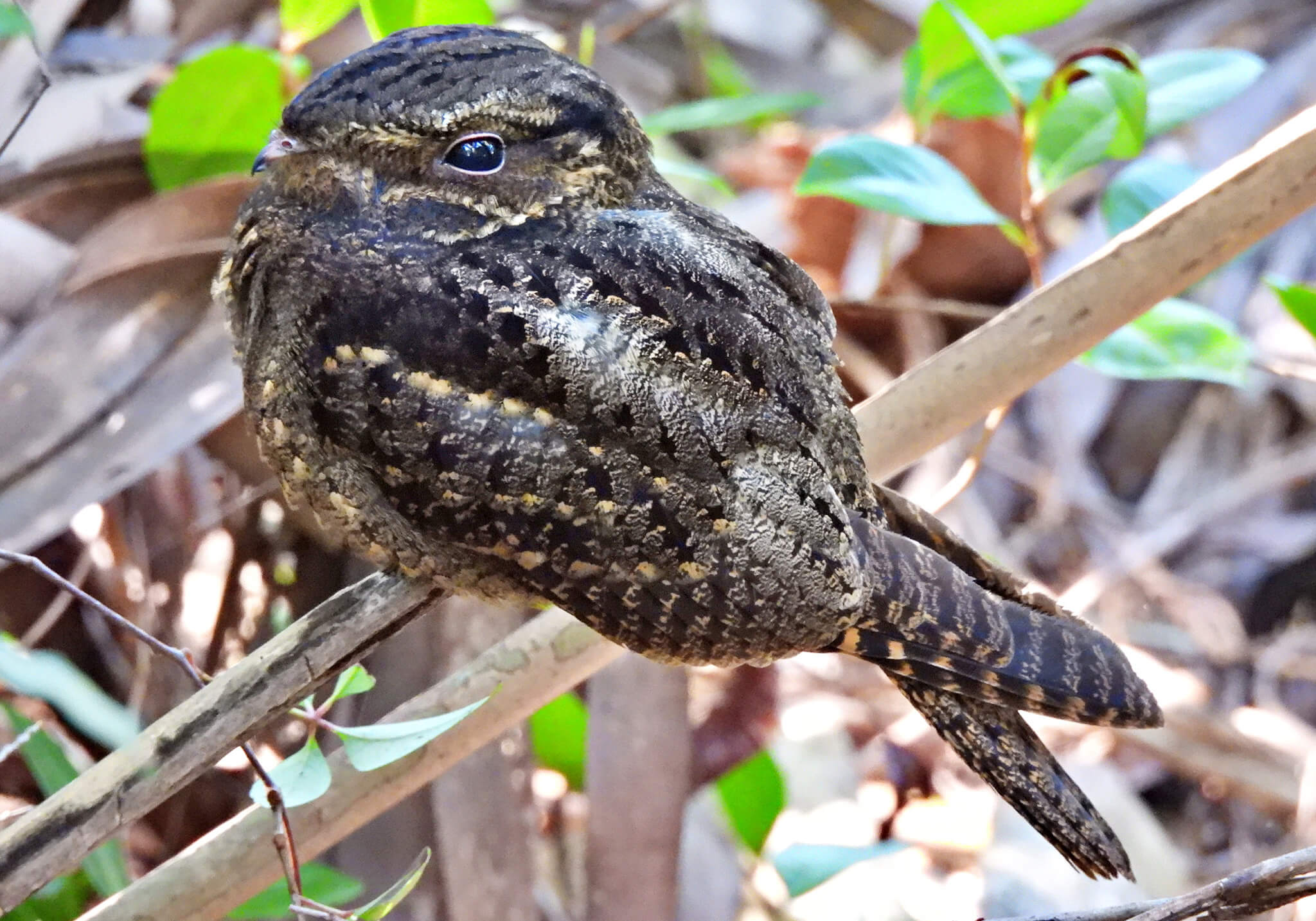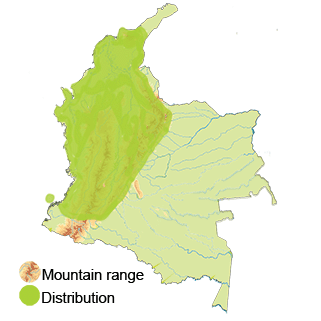Chuck-will's-widow
The Chuck-will's-widow (Antrostomus carolinensis) Read in Spanish
Appearance: The Chuck-will's-widow is a medium-sized nightjar with cryptic plumage that provides excellent camouflage. It has a mottled brown and gray feather pattern with intricate markings that help it blend into its surroundings. This species has a relatively large head, a stout bill surrounded by bristles, and a wide gape, features adapted for catching insects in flight.
Habitat: In Colombia, the Chuck-will's-widow can be found in a variety of habitats, including forests, woodlands, savannas, and scrublands. It prefers areas with dense vegetation for roosting and nesting, such as humid tropical forests and wooded habitats near water sources.
Behavior: As a nocturnal bird, the Chuck-will's-widow is most active during the night, hunting for insects such as moths, beetles, and other flying prey. It relies on its excellent camouflage to roost during the day, often perching lengthwise on tree branches to blend in with the bark.
Breeding: Breeding season for the Chuck-will's-widow typically occurs in the spring and summer months. Males perform courtship displays, which may involve wing clapping, vocalizations, and aerial maneuvers to attract females. Females lay one or two eggs on the ground, relying on their cryptic plumage to conceal the nest from predators.
Conservation Status: The Chuck-will's-widow is not considered globally threatened and is categorized as a species of least concern on the IUCN Red List.
Distribution
The Chuck-will's-widow (Antrostomus carolinensis)
Northern Andes Region The Chuck-will's-widow can be found in the northern Andes region of Colombia, which encompasses departments such as Antioquia, Caldas, Risaralda, and Quindío. This region offers diverse habitats including montane forests, cloud forests, and wooded areas where the bird can find suitable roosting and nesting sites.
Caribbean Region: In the Caribbean region of Colombia, which includes departments like Atlántico, Bolívar, Cesar, and La Guajira, the Chuck-will's-widow may inhabit dry forests, scrublands, and coastal areas. The bird's distribution in this region may be influenced by the availability of suitable foraging grounds and nesting sites.
Pacific Region: Along the Pacific region of Colombia, which includes departments such as Chocó, Valle del Cauca, and Nariño, the Chuck-will's-widow could be found in rainforests, mangrove forests, and coastal habitats. This bird species may utilize the dense vegetation and diverse ecosystems in this region for roosting and breeding purposes.
Taxonomy
The Chuck-will's-widow (Antrostomus carolinensis)
- Kingdom: Animalia
- Phylum: Chordata
- Class: Aves (Birds)
- Order: Caprimulgiformes
- Family: Caprimulgidae
- Genus: Antrostomus
- Species: Antrostomus carolinensis
Vocalization
The Chuck-will's-widow (Antrostomus carolinensis)
- Call: The Chuck-will's-widow gets its common name from its repetitive and mournful call that sounds like "chuck-will's-widow." The call is often heard at night and is repeated multiple times in a rhythmic pattern.
- Song: The Chuck-will's-widow's song is a series of melodious and rolling notes that can be quite loud and far-carrying. The song is typically delivered from a perch or during aerial displays as part of courtship rituals.
- Variability: Chuck-will's-widows are known for their vocal versatility, with individuals in different regions or populations sometimes exhibiting slight variations in their calls and songs.
- Timing: The Chuck-will's-widow is predominantly nocturnal, so its vocalizations are most commonly heard during dusk, throughout the night, and sometimes during the early morning hours.
- Functions: The vocalizations of the Chuck-will's-widow serve various purposes, including establishing territories, attracting mates, and possibly communicating with conspecifics.





